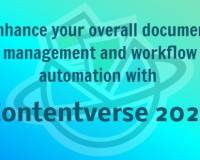The way in which a company decides to manage its files is absolutely crucial to its behind-the-scenes success. Proper organization and storage will help not only efficiency, but will also contribute to the performance of the company as a whole.
However, keeping files and data organized and convenient isn’t always simple. The more a medium-sized business grows, the more file space it will require. Data in the form of graphics, emails, presentations, spreadsheets, audio files, databases, and other documents is extremely valuable to any company (especially a government organization), and ensuring that this data is kept safely and kept where it’s meant to be is important.
There are many things that businesses have to consider when it comes to choosing a filing structure for their company. For example:
- Each new version of an application is going to require more space than the last one. So if your company uses software and programs (such as Scrivener for writing website content or Webroot for anti-virus protection), you’ll need more space each time you update that software.
- Government regulations such as the Sarbanes-Oxley Act require companies to back up data they might have otherwise deleted.
- Email Backup. These days, many smart companies and government organizations are keeping archives of email messages dating back to a minimum of five years. This is done for legal reasons.
- Videos and Heavy Graphics. The growing need to store large media files such as videos and graphic-heavy presentations and make them available to users on a server is creating the demand for better storage solutions.
With all these factors in mind, plus the regular building of data that a company would accrue on its own, the need for an organized and spacious filing structure is inherent.
We all know how important and valuable data is these days. A good filing structure should break down this information into convenient folders that are clear and organized so that a company has instant access to its own data. How granular a company wants to get with its filing structure is up to them—but with the right filing system, the choice is up to the company.


External Hard Drive Storage. Many companies work off of external hard drives. This is a decent option, depending on what your company does. It’s simple enough and does hold a lot of files. However, external hard drives need backups of themselves, and if the information on them is needed outside the office (for a business trip, for example), the hard drive will need to travel along with the employee. There are also issues with external hard drives working for both PCs and Macs, and if something were to happen to the external hard drive—theft, water or fire damage, or a simple hard drive corruption—these files would simply be gone. For all these reasons, external hard drives are not ideal. They work, but they bring some risks.
Network-Attached Storage. The much-praised network-attached storage filing structure is known for its storage capabilities, and it is an effective solution. When you want to add storage space to a network-attached storage system, you can add it without disrupting current access to data. This method is popular with mid-sized businesses that need large amounts of economical storage that multiple users can share over a network. Problems that have been brought up with this filing structure include up front and long-term cost, strain on already-strained backup servers, increased management complexity, and degraded performance with the addition of more capacity.
Online/Cloud Storage. This method of filing provides some very compelling benefits. When a company backs up its most important files to a remote and secure server, those files will not only be protected—they will also be easily shared with clients, partners, and employees who may not be anywhere near the office. All they will need to access the files is a password. No more emailing huge files, no more losing important data. The number one complaint with online/cloud storage is that if an office’s network speed is slow, it may slow down the filing structure. However, this is an easy fix. A company can simply invest into high speed network access. This is a tiny price to pay for such an outstanding filing structure. Cloud storage, with a robust filing solution behind it, is the an ideal file-sharing tool.
So, how do you decide what filing structure is best for you and how to maintain an efficient filing structure?
You simply need to consider your storage needs associated with your applications, your data, and how/where you’ll need to access that data. For instance:
- What applications create the largest amount of files?
- What applications run on which servers?
- How old is the data?
- How much of the data is duplicate or stale?
- How much of the data is not business-related?
- How quickly do you need to be able to access the data?
- From what locations do you need to access which data?
Whether you’re a mid-sized business or a government organization, once you’re able to get a handle on how much data you’re working with and the how, when, and where of accessing it, you will then have a better idea about your storage requirements.


A good ECM system allows businesses to take control of organizing their company’s content so that it’s efficiently filed in a central location, getting everyone—workers, managers, clients, partners— on the same page. Data and content is organized by what it is, not where it is. ECM also offers more options, such as integrated scanning, long-term archiving, better delivery features, and more sophisticated storing management.
With ECM, workers can not only find a file they need, but all the other content that relates to it. For example, if they’re looking up an invoice, they can also quickly and easily view that invoice’s purchase order, packing slip, and the check that was used to pay it.
The main point that everything boils down to is convenience through organization. Employees don’t have time to waste searching for that one email, that lost invoice, that ancient process document. Instead, it should be a few clicks away, and those things should be in their exact spot. A filing structure that allows this luxury to its employees is a filing structure that will help the business go even further because it’s on top of things.
Determine what sort of filing structure your company or government organization requires, and make it the most whipped-into-shape filing structure possible!
At Contentverse, we specialize in helping businesses organize and maintain their information, content, and data through cutting-edge enterprise content management systems. If you’re looking for content management solutions for your business, we’re your experts. Allow us to help you today!











Leave a Comment